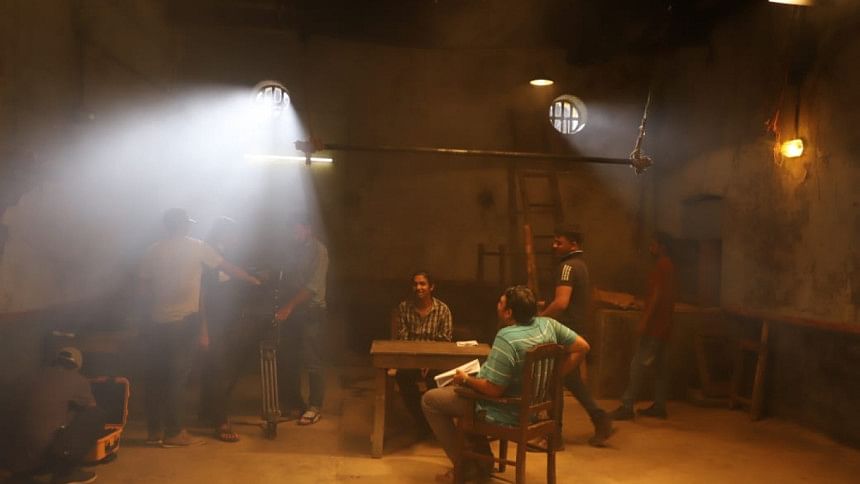Karagar: The blurred line between fact and fiction

The long-awaited "Karagar Part-1" has finally been released on Hoichoi. The show, while not an instant homerun, can be likened to a slow game of poker. Layers upon layers of fiction, blended with facts, makes "Karagar" a witty commentary on the slippery nature of truth. As the audience starts to believe where the story is going, Syed Ahmed Shawki turns the table on his audience, bluffing them with a royal flush.
If we are to liken "Karagar" to a game of cards, then Shawki's ace is actor-extraordinaire, Chanchal Chowdhury. The king would be Intekhab Dinar; the queen, Tasnia Farin; and the jack, A K Azad Shetu—putting their best foot forward to drive the show's story.

Veteran actor Afzal Hossain also gave an impeccable performance, particularly through his use of gestures. His looks, however, seem imposed, over the top and loud compared to his peripheral characters. Another performance worth mentioning is that of Pavel Zaman, who, even with minimal screen time, managed to stand out.
"Karagar" is an allegory of time and space, of people in and outside the iron bars. While the top authority of Akashnagar Central Jail is preoccupied with a leaked video of a woman walking into the jail premises, a newbie constable discovers a mystery man, who was allegedly sealed away in cell number 145 for fifty years.

The mayhem and horror of the system, along with its custodians, is vividly reflected in the narrative of separation, reunion, stigma, tenderness and indifferences -- Shawki meticulously plotted each character's story in the first season.
The story's narrative draws a map of historical residues, thereby re-opening the pages of history. The series' subtle use of satire as a commentary of the symbiotic wrongdoings of the system showcases how the young team of writers have honed their skill. The different twists and turns of the show feel like a deck of cards that is constantly being shuffled, each time drawing a card that completely changes the direction of the plotline.
The theological and mystical elements of the show were made overtly obvious, with the first scene showing the oracle—in the form of the chief hangman, Mohabbat Ali. Talking about the manifestation of a divine call, he prophecies that his wait will be 120 years after a storm will arrive. Theologians identify this number as the divine waiting time. The storm resides in cell 145, another divine number, representing life and death equally in the Holy Quran or perhaps it refers to the biblical angel number. Spiritually, or at least deep down, the setting for this saga could not have been placed anywhere else but in a prison.

The minds behind the movie have already proven their technical skills in the past. Now, "Karagar" is a reflection of their over maturity as filmmakers. A huge level of credit has to be given to the costume and makeup departments, who helped stitching important clues through art Direction.
Separate stories are interwoven through one another, yet it is cut and edited together in a way that contributes to the overall narrative. Putting forth a chaotic, insistent, and reflexive gaze on everyday wrongdoings.

Tying in elements from mythology, religion, history and linguistics, the production can cause a level of intellectually torment for the audience. While season one remains unfinished and unfulfilled, it is not unsatisfactory. Some might say that the first season could have tried and provide some level of closure—like a main course, rather than an appetiser—others might relish in the wait for season two.
For now, the motif remains obscure. "Karagar" is an ambitious production, that is definitely visual treat for viewers. Now, the audience is left hanging off a cliff, much like the story.

 For all latest news, follow The Daily Star's Google News channel.
For all latest news, follow The Daily Star's Google News channel. 



Comments